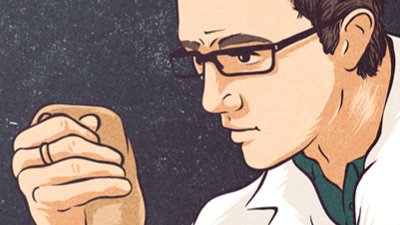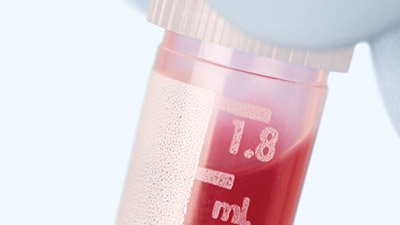What Came From Fat?
As far back as 2001, creationists pointed to liposuctioned fat as a source of stem cells that didn’t require the destruction of embryonic human life. Good to see secular scientists catching on.
News Source
- Scientific American: “Induced Pluripotent Stem Cells Created From Fat Cells”
Nearly two years ago, researchers discovered a method to transform skin cells into pluripotent stem (iPS) cells, the stem cells that can become other cell types (e.g., neural, cardiac, cartilage, and others). These iPS cells could lead to cures for various disorders and to organ regrowth and regeneration. This important breakthrough undermined the perceived need to destroy human life in order to harvest stem cells (especially since so-called embryonic stem cells have proven harmful to recipients).
Fat cells are easier to “program” for use throughout the body.
Now a group of doctors and plastic surgeons at the Stanford University School of Medicine has turned to what one researcher calls a “readily available, great natural resource”: fat cells. The benefits of using fat cells to make iPS cells is that one liter of fat produces hundreds of millions of stem cells, they take less time to be cultured (twice as quickly as skin cells), and they are easier to “program” for use throughout the body. And most patients have a few fat cells they’d be willing to donate.
Don’t expect to see this new method in a clinic near you for a few years, however. Any new treatments must first pass clinical testing and receive FDA approval. In addition, there are still many questions regarding the efficacy of these stem cells, the time required to “coach” them before reintroducing them to the patient, and safety concerns.
For Christians, new sources of God-honoring stem cells are always good news. Even if embryonic stem cells (ESC) had proven useful (which remains in serious doubt), there’s no justification for destroying one life to save another. The model for Christians is to lay down one’s life for others—not to take life away for one’s own selfish gain.
Even as far back as 2001, Ken Ham argued that there was no reason to study ESCs, since
non-embryonic stem cells have had proven laboratory and clinical successes and don’t require any loss of human life. For example, stem cells have been extracted from hippocampal and periventricular regions of the brain, umbilical cord blood, pancreatic ducts, hair follicles, skin biopsies, and liposuctioned fat.
There was never any excuse to rely on ESCs when so many other viable and ethical sources are—and have been—available. This new research simply emphasizes the fact that adult stem cells are worth their weight (pun intended).
Further Reading
- The Debate over Stem Cells
- Stem Cells
- Stem Cell Research—Lifesaving Alternatives
- Get Answers: Cloning and Stem Cells, Morality and Ethics
For More Information: Get Answers
Remember, if you see a news story that might merit some attention, let us know about it! (Note: if the story originates from the Associated Press, FOX News, MSNBC, the New York Times, or another major national media outlet, we will most likely have already heard about it.) And thanks to all of our readers who have submitted great news tips to us. If you didn’t catch all the latest News to Know, why not take a look to see what you’ve missed?
(Please note that links will take you directly to the source. Answers in Genesis is not responsible for content on the websites to which we refer. For more information, please see our Privacy Policy.)

Answers in Genesis is an apologetics ministry, dedicated to helping Christians defend their faith and proclaim the good news of Jesus Christ.
- Customer Service 800.778.3390
- © 2024 Answers in Genesis




